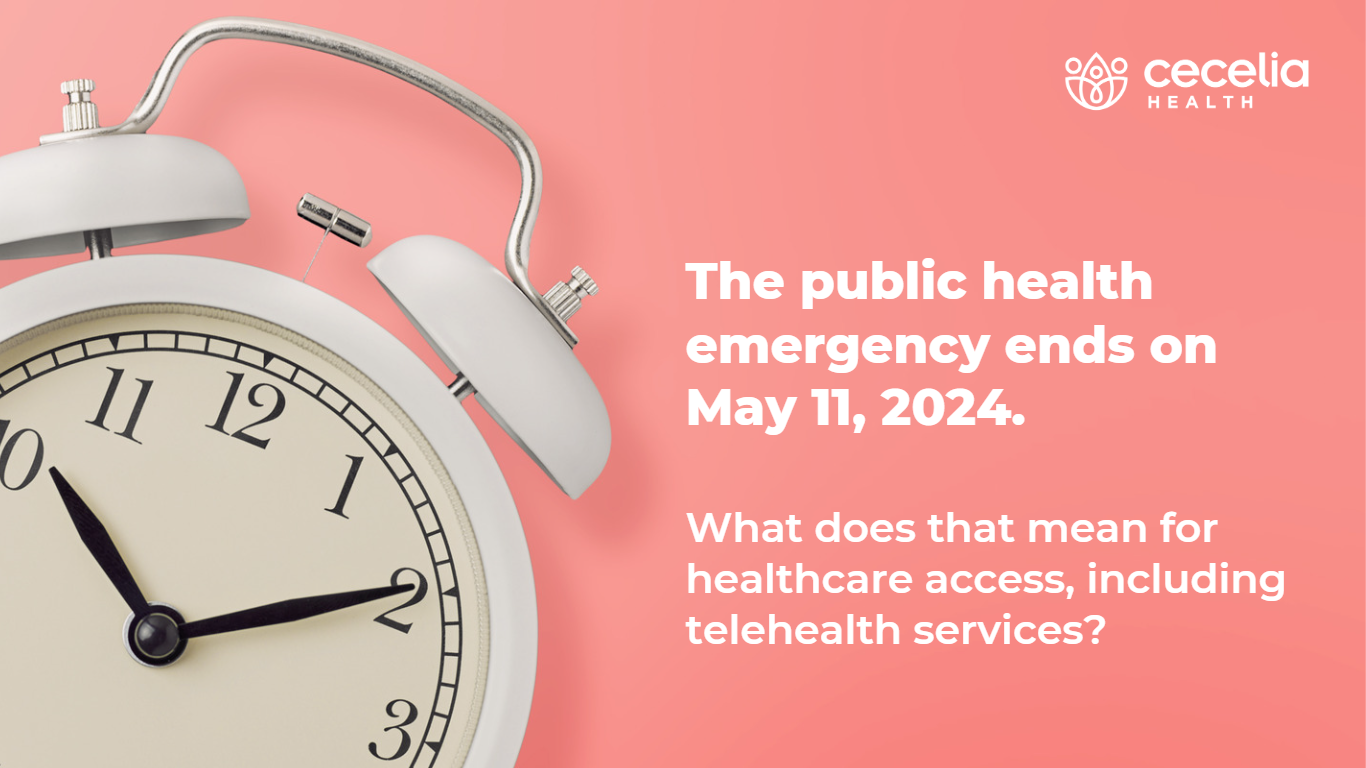By Dorothea K. Vafiadis, MS
The end of the COVID-19 public health emergency (PHE) begins on May 11, 2023, with many emergency waivers and flexibilities set to expire. This will impact beneficiaries enrolled in federal health programs but also have ramifications for other entities across the healthcare industry. The end of the PHE also signals change in how some services, especially for Medicare beneficiaries, will be accessed and reimbursed—but not all of them.
Telehealth
Several policies related to telehealth reimbursement were enacted during the pandemic to help more people access remote care. This was essential given stay-at-home orders but also increased awareness of the need for telehealth solutions, especially to support those with limited mobility or living in rural areas. With the Consolidated Appropriations Act of 2023, many of these telehealth flexibilities were extended through 2024. Several, including those related to accessing mental telehealth services, are permanent changes, but others are not. As May 11 approaches, here is the status and changes of services:
- Providers who typically work in the hospital outpatient (HOP) setting will no longer be able to perform telehealth services and bill Medicare with HOP as the place of service.
- Unless an extension is granted, providers will no longer be able to reduce or waive copayments or deductibles for telehealth or remote patient monitoring (RPM) services offered to Medicare beneficiaries.
- RPM services will once again be limited to “established patients” after the PHE ends, meaning providers will be required to conduct a new patient evaluation prior to RPM initiation.
- Telehealth coverage for Medicare beneficiaries will be extended through 2024, so telehealth services will be covered wherever patients are located, including in their own home.
- The waiver to allow additional types of practitioners to bill Medicare for telehealth services, including occupational, physical, and speech therapists will be extended.
- Clinicians will be able to continue to communicate via phone calls and bill Medicare for those services through 2024 (except for behavioral/mental health services, which will be covered as a permanent change as stated above).
- Rural Health Clinics and Federally Qualified Health Centers will continue to provide telehealth services for Medicare beneficiaries.
Care delivery
Hospitals, providers, state programs, and nursing homes were extended waivers and emergency flexibilities throughout the pandemic in support of expanded COVID-19 treatment coverage. Many of these will expire with the PHE ending on May 11, including payment terms for both inpatient and outpatient treatment of COVID-19. Most notably, the Hospitals Without Walls initiative—in which hospitals were able to furnish services including education and therapy in offsite locations, such as patients’ homes—will end. Especially for patients in rural areas, this may have an immediate impact on their access to healthcare services.
Dual eligible populations
In 2022, 23% of Medicare Advantage (MA) enrollees were dual-eligible for Medicare and Medicaid. In the same year, total Medicaid enrollees reached a record nationwide enrollment of 91.7M—a 30% increase over 2019. With the removal of the Medicaid continuous enrollment period that was enacted in 2020, millions are expected to lose state-funded coverage. In fact, anywhere from five to 18 million people will be disenrolled from Medicaid according to some estimates. Yet, an estimated 6.8 million of those who lose coverage may still be eligible due to confusing reenrollment processes.
Members enrolled in MA plans who lose Medicaid status will no longer have access to some benefits, like dental care, or community-based support. However, even those who reenroll may be affected. For example, Supplemental Nutrition Assistance Program (SNAP) Emergency Allotments ended on February 28, reducing the benefits back to the standard federal amount.
A new normal
Although many operational exceptions allowed during the PHE will begin to wind down on May 11, the healthcare landscape is forever changed due to the COVID-19 pandemic. Many MA plans and other payers are embracing the pivot to hybrid—or, in some cases, digital-first—care experiences post-pandemic. What started as “how can we do this? is now “how can we do this better?”
Although some patients’ access to care will be disrupted due to the unwinding of the public health emergency, telehealth policies and virtual care solutions will continue to evolve in an effort to solve for disparities that prevent true health equity across all populations. A virtual specialty clinic, for example, offers an approach to address these challenges at scale while extending access to specialized clinicians who can support physical, mental, and social needs. Although the last three years have presented us all with seemingly insurmountable challenges, these challenges have accelerated the pace of telemedicine. I have tremendous hope for this new normal and the promise of advancing telehealth for those who otherwise lack access to quality care.

About the author
Ms. Vafiadis is a member of the Cecelia Health Clinical Advisory Board. She is the Director of Healthy Aging Partnerships and Strategic Engagement at the National Council on Aging, where she develops business alliances to drive wellness initiatives through strategic priorities, programs and policies. Her work often takes shape in community activation and national demonstration projects for improving the lives of older adults and ensuring equitable aging for all. Ms. Vafiadis has worked for more than 25 years in public health, government and non-profit organizations focusing on strategies for nutrition innovation and chronic disease prevention. She has regularly collaborated with national and global scientific experts, managed volunteer panels and executive advisory boards, and delivered thought leadership on a broad range of mission-related issues such as healthcare access, sustainable health, nutrition security and behavior change for healthier living and aging.
Prior to joining NCOA, Ms. Vafiadis was the Director of Healthy Living at the American Heart Association (AHA); among her accomplishments was creation of the organization’s annual food industry leadership forum. Prior to working with AHA, she was a Senior Nutritionist at the Center for Nutrition Policy and Promotion at the U.S. Department of Agriculture, where she worked on the federal dietary guidelines. Ms. Vafiadis is a member of the Food Forum within The National Academies of Sciences, Engineering and Medicine, and a Fellow of the American Heart Association.
Sources
- CMS Waivers, Flexibilities, and the Transition Forward from the COVID-19 Public Health Emergency. (2023). Available at: https://www.cms.gov/newsroom/fact-sheets/cms-waivers-flexibilities-and-transition-forward-covid-19-public-health-emergency. Accessed 16 Mar 2023.
- Hogan Lovells, et al. (2023) After the Public Health Emergency: Implications for Medicare and U.S. federal health care policies. Available at: https://www.jdsupra.com/legalnews/after-the-public-health-emergency-6454182/. Accessed 16 Mar 2023.
